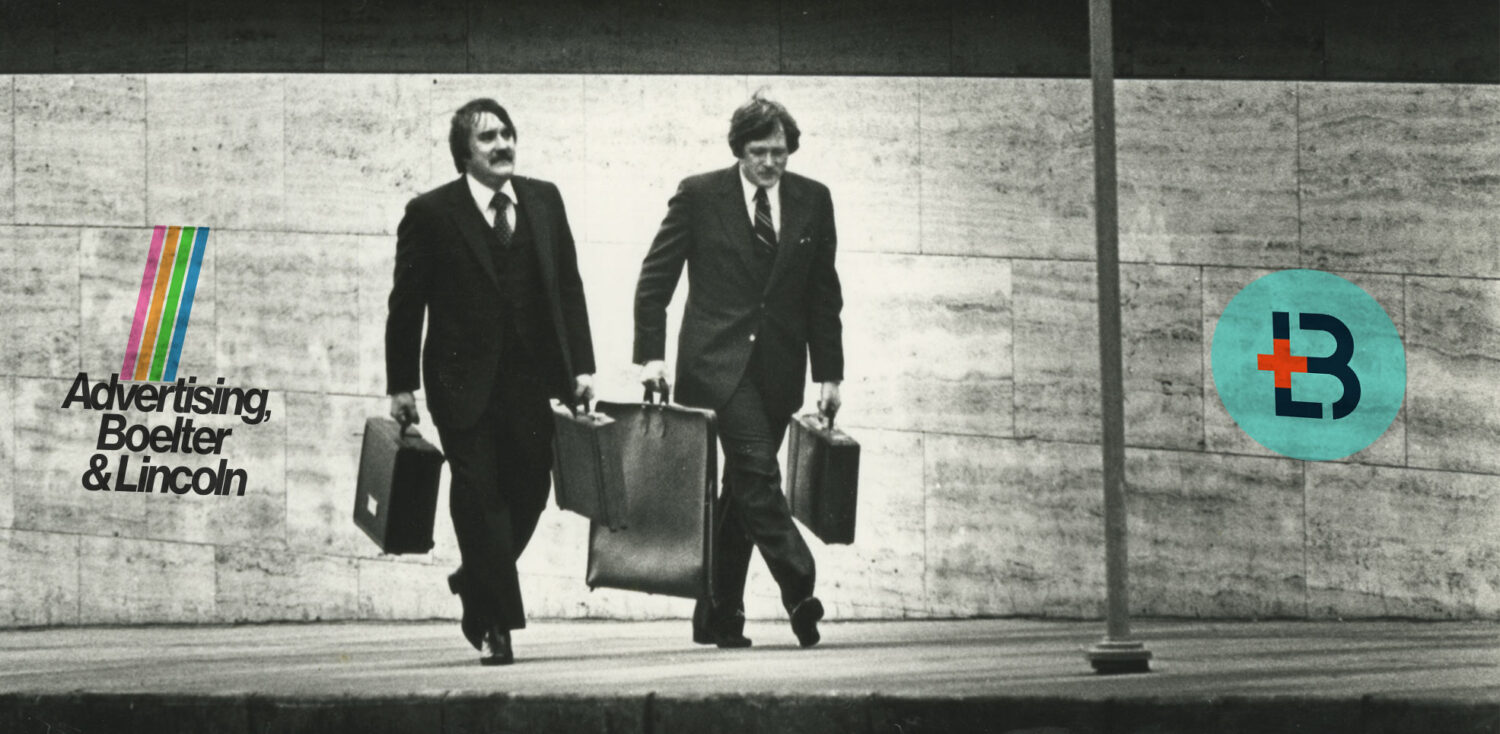B+L at 50: The Song Remains the Same

For much of the world, April 1, 1975 was not a great day. Among other things, Cambodia's president, Lon Nol, fled his country ahead of Khmer Rouge rebels, the U.S. evacuation of Viet Nam began, and fighting erupted along the Greek/Turkish border. Things weren’t much better stateside, as the Supreme Court rejected a ban on dumping by Reserve Mining and Chicago was hit with a crippling snowstorm.
For two entrepreneurial businessmen in Milwaukee, however, there was cause for celebration: Bob Boelter and John Lincoln founded Advertising, Boelter + Lincoln.
In the five decades since, Advertising Boelter & Lincoln (now known as “Boelter + Lincoln”) has become a mainstay in the Milwaukee business community, having grown from the two initial employee/owners to its current size of 34. During that time, it has witnessed incredible changes in the industry, reflective of the tectonic shifts in the country overall. With that in mind, we thought it might be fun to look back at how the agency biz has changed since April of 1975:
OFFICE ATTIRE:
Then
- Everyone wore suits and ties, except for the creatives, who favored blue jeans (and even they had ties on for client presentation days.)
Now
- Everyone is in jeans, including on client presentation days (including the clients). NOTE: The only exception to this rule might be banking executives, but even they don’t usually wear ties anymore.
MEDIA BUYING:
Then
- Using new-fangled calculators, media buyers spent their billable time choosing between 3 television networks, 4-5 radio stations, a daily newspaper or two, and hundreds of national magazines. (And ad sales reps had tickets to everything!)
Now
- Using sophisticated software and AI, buyers evaluate 1,000+ TV options between broadcast, cable and streaming, a gazillion websites and podcasts, a handful of broadcast radio stations and the occasional surviving daily newspaper or monthly magazine. (Let’s not even get into search bids, programmatic buying or retargeting…)
CREATIVE / PRODUCTION:
Then
- The keyline and paste-up area was the center of every creative/production department, and there was always a spray mount booth nearby. Photo loops, X-Acto knives, cutting boards and light tables were everywhere…as were ashtrays. Illustrations were hand-drawn and hand-tinted, and aerial footage came from an airplane. Radio spots were recorded on reel-to-reel. Presentations were hauled around in “pizza cases” and shown using easels.
Now
- Everything is done on a MacBook Pro. (Except for drone photos or Go-Pro footage…which get fed into a Mac.) Presentations are on iPads or laptops, then cast onto big screen TVs.
PUBLIC RELATIONS:
Then
- Mass mailing press releases; stuffing press kits with printed materials and slide photography; press conferences at big events; worrying about the news cycle and print deadlines; wooing reporters after work at the bar.
Now
- 24/7/365 news cycle; skeleton news staffs; social media memes and fake news; press conferences via Zoom; wooing reporters after work at the gym.
ACCOUNT MANAGEMENT:
Then
- Plans, timelines, budgets and conference reports on paper, stored in 3-ring binders on a shelf. Ashtray on desk. Scotch in cabinet.
Now
- Plans, timelines, budgets and conference reports stored digitally on laptop. No ashtray. No Scotch.
Obviously, many things in the advertising, marketing and PR world (and at Boelter + Lincoln) have changed dramatically since 1975…most of them for the better. However, in many important ways, we are fundamentally the same agency that we were then. Our foremost goal then and now was to help the client’s business. That hasn’t changed. Our best growth strategy then and now was simply to do good work. And while we worked hard then, we also played hard, and valued friendships with clients and co-workers. Those things haven’t changed either. So, whether B+L was operating from an office near Mayfair, the Germania Building in West Town, a Cream City warehouse in the Historic Third Ward (or virtually, during the COVID pandemic), our core values remained steady. Or, as an iconic ‘70s rock band put it: the song has remained the same.
Here’s to another 50 years!

